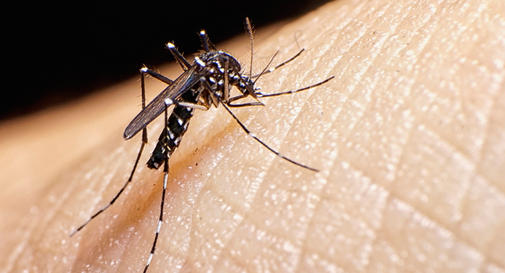Turmeric, widely revered for its vibrant yellow hue and medicinal properties, is an essential ingredient in kitchens across the world. From its culinary uses to its cultural significance and health benefits, turmeric is deeply embedded in the daily lives of millions. But a troubling new study has raised alarms about the presence of lead in turmeric sold in South Asia, with potentially dangerous consequences for both adults and children.
A recent investigation conducted by researchers from Stanford University, in collaboration with Pure Earth and India’s Freedom Employability Academy, examined turmeric samples from various cities in India, Pakistan, Nepal, and Sri Lanka. The findings were alarming: a significant proportion of the turmeric samples exceeded the regulatory limits for lead contamination, posing a serious public health risk.
The Study: A Wake-Up Call for South Asia’s Turmeric Industry
The research, published in the Science of The Total Environment journal, analyzed turmeric from 23 cities in South Asia. The results revealed that around 14% of the turmeric samples contained lead levels surpassing 2 micrograms per gram (µg/g), and some samples had dangerously high levels, exceeding 1,000 µg/g. The Food Safety and Standards Authority of India (FSSAI) mandates that turmeric should not contain more than 10 µg/g of lead, yet the study found several samples from major cities where lead content far exceeded this limit.
Among the cities with the highest levels of lead contamination were Patna, Guwahati, and Chennai in India, as well as Kathmandu in Nepal and major urban centers in Pakistan, including Karachi, Islamabad, and Peshawar. Patna, in particular, stood out, with lead levels reaching a staggering 2,274 µg/g, more than 200 times the FSSAI’s permissible limit.
The findings point to a serious issue in the turmeric supply chain across South Asia, where regulation and monitoring are often insufficient. While turmeric is essential to the region’s culinary landscape, the introduction of toxic substances into the turmeric supply chain is a dangerous and avoidable risk.
Sources of Contamination: How Lead Gets Into Turmeric
One of the main contributors to this contamination appears to be the addition of lead chromate, a yellow pigment commonly used in industrial products like paints. This substance is sometimes added to low-quality turmeric to enhance its color, making it appear more vibrant and appealing to consumers. Unfortunately, this practice has serious health implications. Lead chromate is highly toxic and can lead to lead poisoning when consumed.
The practice of adding lead chromate to turmeric is not new. In fact, similar incidents have been reported in other countries, such as Bangladesh and the United States, where unscrupulous traders have used this pigment to boost the visual appeal of subpar turmeric. In Bangladesh, investigations have revealed that lead chromate has been routinely mixed with turmeric for decades, primarily to improve its color and increase its market value. This illegal practice puts people, especially children, at risk of lead poisoning, which can have devastating effects on their health and development.
The Health Risks: A Silent Threat
Lead is a potent neurotoxin, particularly harmful to children, whose developing brains are more vulnerable to its effects. Even low levels of lead exposure have been linked to severe health problems, including reduced cognitive function, behavioral issues, and developmental delays. Studies have shown that blood lead levels as low as 3.5 µg/dL can impair children’s intelligence and cause attention disorders.
When lead enters the body, it can mimic calcium, an essential element for bone and nerve function, leading to its accumulation in bones and soft tissues. Over time, this accumulation can cause long-term damage, affecting the nervous system, kidney function, and even the cardiovascular system. Lead exposure can also have detrimental effects on adult health, including hypertension and kidney disease.
The scale of the problem is staggering. According to the World Health Organization (WHO), it is estimated that over 800 million children globally have blood lead levels higher than the safe threshold, which is considered to be 5 µg/dL. This means that millions of children are at risk of lead-related health issues, and the consumption of contaminated turmeric is just one of many pathways through which lead can enter their bodies.
The Role of Turmeric Supply Chains
The study’s authors suggest that the turmeric supply chains in South Asia are in urgent need of reform. While lead contamination in turmeric is not illegal per se, the widespread presence of lead chromate, particularly in unregulated turmeric powders and loose turmeric roots, highlights the gaps in the regulatory framework governing the production, distribution, and sale of turmeric.
Turmeric that is polished to improve its appearance has been shown to have the highest levels of contamination, followed by loose powders that are sold without proper packaging or labeling. On the other hand, packaged and branded turmeric products, which are subject to stricter regulation, generally contained lower levels of lead contamination. This suggests that there is a significant discrepancy in the way turmeric is produced and sold, with unregulated forms of turmeric being more prone to contamination.
Moreover, the study points out that the lack of proper monitoring and enforcement of food safety standards is a major factor contributing to the widespread contamination. The researchers have called for greater transparency in the turmeric supply chain, improved testing procedures, and stronger enforcement of existing regulations to protect consumers from exposure to toxic substances.
The Way Forward: Ensuring Safe Turmeric for Consumers
To address the issue of lead contamination in turmeric, both regulatory authorities and the turmeric industry must take immediate action. Some steps that can be taken include:
1. Strengthening Regulations: Governments in South Asia should tighten food safety standards for turmeric and other spices, ensuring that lead contamination is thoroughly monitored and reduced to safe levels.
2. Increasing Awareness: Farmers and traders need to be educated about the dangers of using toxic additives like lead chromate in turmeric. Public awareness campaigns should focus on the health risks associated with lead contamination, particularly for children.
3. Improved Testing and Monitoring: Regular and rigorous testing of turmeric products at various stages of production and distribution can help identify contamination early, preventing harmful products from reaching consumers.
4. Consumer Choices: Consumers can help mitigate the risks by purchasing packaged and branded turmeric products, which are more likely to meet safety standards, rather than loose turmeric or polished roots, which may be more susceptible to contamination.
Key Takeaway
The discovery of high levels of lead in turmeric is a stark reminder of the hidden dangers lurking in everyday food products. While turmeric remains a cornerstone of many cuisines and cultures, it is crucial that its safety is ensured for the health and well-being of millions of people. With stricter regulations, better enforcement, and greater consumer awareness, the toxic practice of adding lead chromate to turmeric can be curbed, protecting the public, particularly vulnerable children, from the harmful effects of lead exposure.










